Hell on Earth. How Russian aggression is devastating Ukrainian black soil
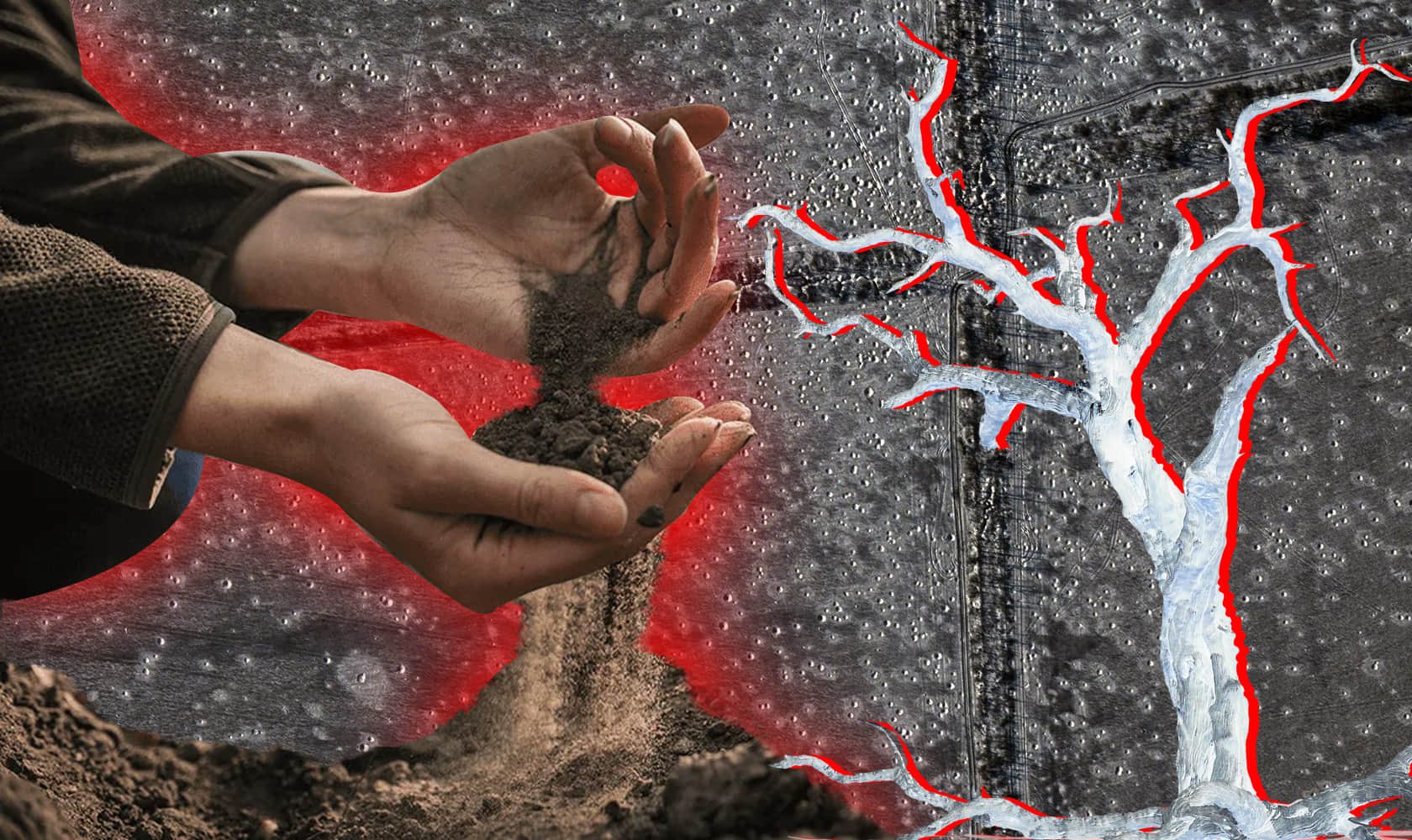
There's a widely spread story that the Nazis took chornozem (black soil) out of Ukraine during World War II. That's a myth. At least historians have no way to prove it.
However, this fable reflects a reality: Ukrainian soils are a real treasure. Although Ukraine occupies less than 0.5% of the world's total land area, it has about 6-8% of its black soil reserves. This soil is the major contributor to Ukraine's position as one of the world's agricultural leaders.
This year, Ukrainian media reported that Russian supermarkets were selling Ukrainian black soil "thoroughly tested for harmful substances". Bearing in mind the "traditions and values" of the Russians, imagining this would not be a problem.
However, no matter how true this is, the Russians cannot rob Ukraine of any substantial amount of black soil by doing so. Meanwhile, it's beyond any doubt that the Russian occupying forces have been devastating Ukrainian soil on the spot and have achieved significant "success" in this regard.
Ukrainska Pravda explains how the hostilities affect Ukrainian soil, how to "cure" it, and what lies ahead for the most severe "patients".
Bomb craters for fish
About 2.5 million craters from explosions were left on the territory of Vietnam at the end of the Vietnam War.
The forests were heavily covered with Agent Orange chemicals to prevent the Vietnamese from hiding under the crowns of tropical trees. This made the trees bare and eventually killed them.
Bombings were launched to starve the agrarian country of resources for life and resistance. Vietnamese peasants turned the craters left by the bombs into fish ponds after the war ended.
Thankfully, the stories of war affecting nature are not as dark as most other stories about war. After all, war is, in fact, an opportunity for some of nature.
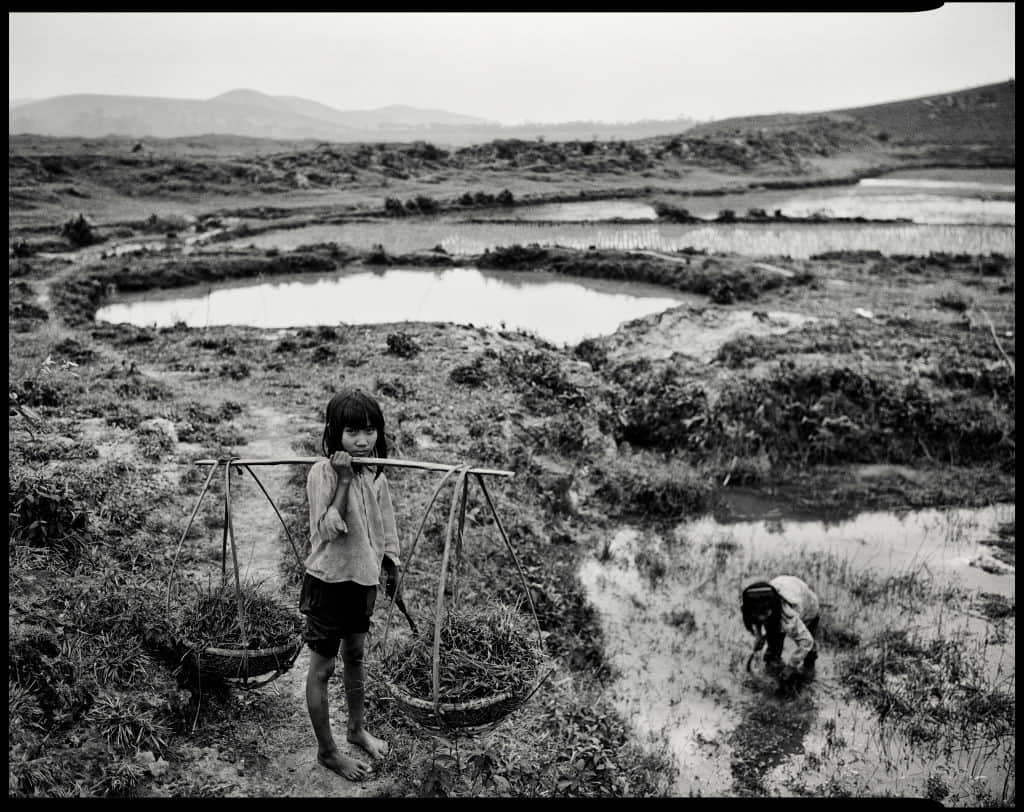
People leave crops in the fields, leading to a growing mouse population. This increases the food supply for foxes and wolves. That's why the wolf, in particular, is rightly called the "animal of war".
Unlike birds and animals, people in Ukraine don't feel excited about the ban on visiting forests during the war.
The Demilitarised Zone between North and South Korea represents a dangerous location with no people. Nevertheless, it has become a nature reserve, home to the Amur leopard, rare species of cranes, bears and over a hundred species of animals requiring protection.
A butterfly called the St Francis's Satyr lives on the territory of Fort Liberty, a US military base. It's no coincidence that military bases are generally much more hospitable places for plants and animals than peaceful cities and fields abundantly irrigated with poisons.
The list of such paradoxical examples of war or the military sphere positively impacting nature goes on. Unfortunately, there will be almost no examples involving soil, as war never benefits it. The instance of artificial ponds in bomb craters is perhaps the only exception to this rule. Even so, it was only because the original soil turned to the bottom of the pond.
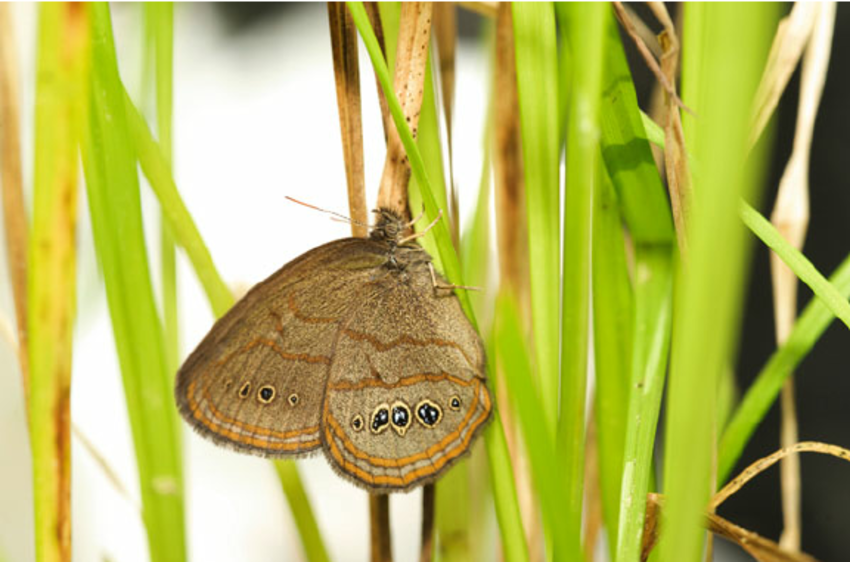
The rich inner world of soils
Olena Pareniuk, a radio biologist and science promoter, draws an analogy with the human body when explaining to children how soil works. The biosphere is the human body, while the soil is the intestines.
Many different bacteria inhabit this organ in humans and other animals. Should the balance in this "rich inner world" be disturbed by antibiotics or an unhealthy diet, a person becomes ill, sometimes severely.
The soil is home to countless invertebrates and an incomparably greater number of bacteria and fungi. Their task is to decompose the remains of dead plants and animals in order to allow chemical elements to reach the plants and continue the cycle of life.
They have other tasks as well. For example, nitrogen-fixing bacteria supply plants with air nitrogen, which plants cannot absorb independently.
Liudmyla Biliavska, PhD, from the Institute of Microbiology and Virology, named after D.K. Zabolotny, says 1 gram of "healthy" soil contains billions of various microorganisms, providing its fertile properties.
Nevertheless, such high-quality soils are rare in agricultural fields. Billions of microorganisms turn into millions due to ruthless exploitation.
Millions are reduced to thousands where a tank burned or a bomb exploded. And at the same time, the soil's ability to support plant life declines.
Lead. Copper. Mercury
Meanwhile, the ground at or near the site of the explosion is "enriched" with chemical components that were previously absent or far less abundant.
Kateryna Polianska, an environmentalist from Ecology. Law. People project, collected over a hundred soil samples from various parts of Ukraine where hostilities occurred to determine the chemical changes in the soil.
The soil from a shell crater in a schoolyard in Mykolaiv Oblast appeared to contain over 600 milligrams of lead per kilogram. This is about 20 times the maximum permissible concentration (MPC), the threshold amount considered safe for human health.
A kilogram of soil near the crater contains only 25 milligrams of lead. This is less than the MPC, and it proves there were no lead concerns in the ground before the shell exploded in the schoolyard. Testing this is also important, as military operations often occur in industrial zones, where the environment was far from exemplary even before the war.
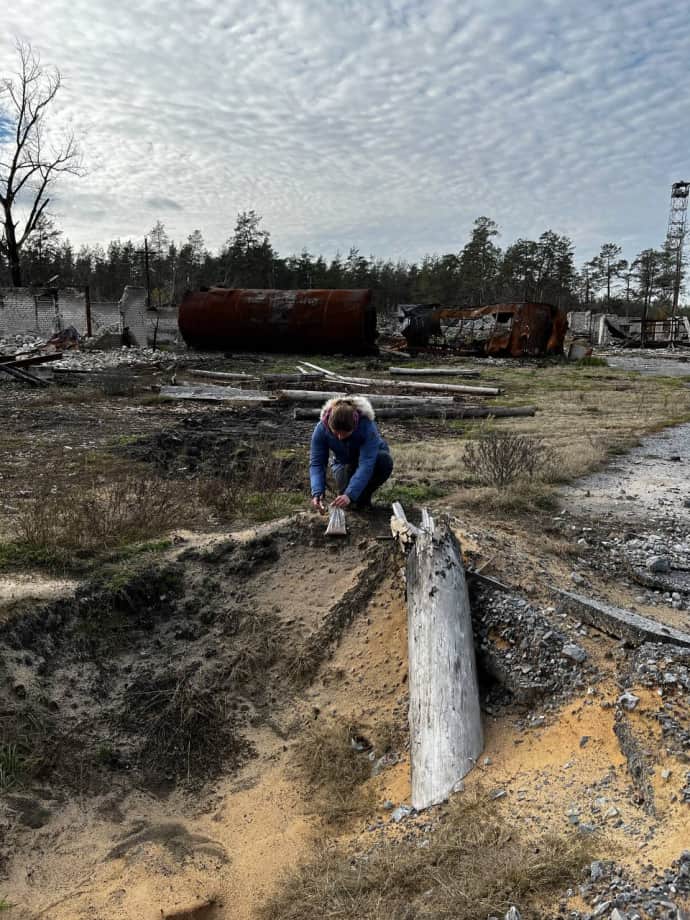
Another sample taken by Kateryna at the site of a missile crater in the forest, located in Mykolaiv Oblast, contained copper concentrations exceeding normal levels by over a hundred times.
Such high concentrations of hazardous metals are not common at the site of hostilities. However, for mercury, vanadium and cadmium, exceeding background values by a factor of 3-6 is commonplace.
Deadland
Heavy metals are far from the only chemical trace of warfare in the soil. Explosions, spills and combustion release a whole bunch of different chemical compounds into the environment, from practically safe ones, such as carbon dioxide, to obviously harmful ones. For example, trinitrotoluene, also known as TNT, is toxic to humans and soil organisms.
All of these "chemical weapons" in high concentrations, combined with the high temperature and pressure from the explosion, can literally kill the soil.
Liudmyla Biliavska conducted experiments involving different soil samples from the battlefield to test whether it was suitable for growing plants. It turned out that wheat seeds do not germinate in the soil from under a burnt-out tank.
It could be even worse if some plants sprout on the war-torn land.
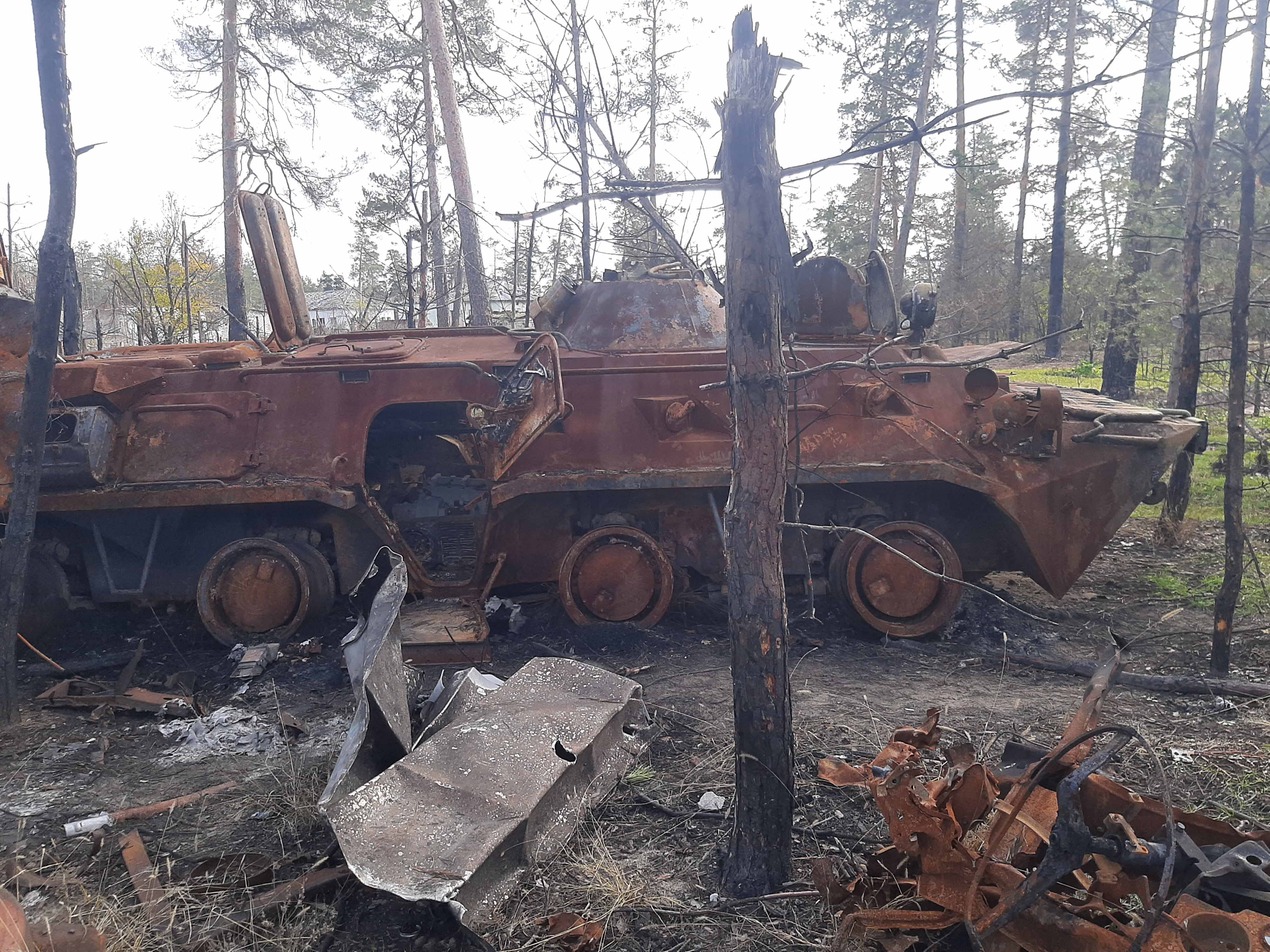
How to deal with craters?
The type and amount of chemical pollutants that get deposited in the ground during hostilities can vary. It depends – among other things – on the type of substance used, the type of soil, and what grows in the area.
Some substances might end up in ground waters that might be used or consumed by humans. Others might end up in agricultural plants – and from there, make their way into human bodies.
Leafy greens, for example, are particularly prone to accumulating heavy metals.
That is why Kateryna Polianska insists that covering up a crater in a field or on a vegetable patch with fresh ground and continuing to grow vegetables and other agricultural products on that spot is far from an ideal solution. Ideally, damaged soil has to be dug up and replaced with fresh, "healthy" soil.
But there are no designated areas in Ukraine where the soil damaged in shelling could be safely stored. Moreover, there isn’t an easily accessible supply of "healthy" soil to treat all craters left after shells and projectiles.
In light of this, environmentalist Oleksii Vasyliuk’s proposal for Ukraine to temporarily use Russian fields doesn’t seem all that far-fetched. Though it doesn’t appear particularly realistic, either.
Sown with shrapnel
Much of Ukraine’s agricultural land is currently occupied by Russian forces; some areas are riddled with mines, others damaged by hostilities. It’s impossible to assess the real condition of those lands and the total amount of damage as long as the active phase of the war is ongoing, but here is one example.
Using a satellite image, environmentalists estimated that there are more than 2,000 craters per one square kilometre in a field in Izium district (Kharkiv Oblast): evenly distributed, these would appear as one crater per each square with a 22-metre side.
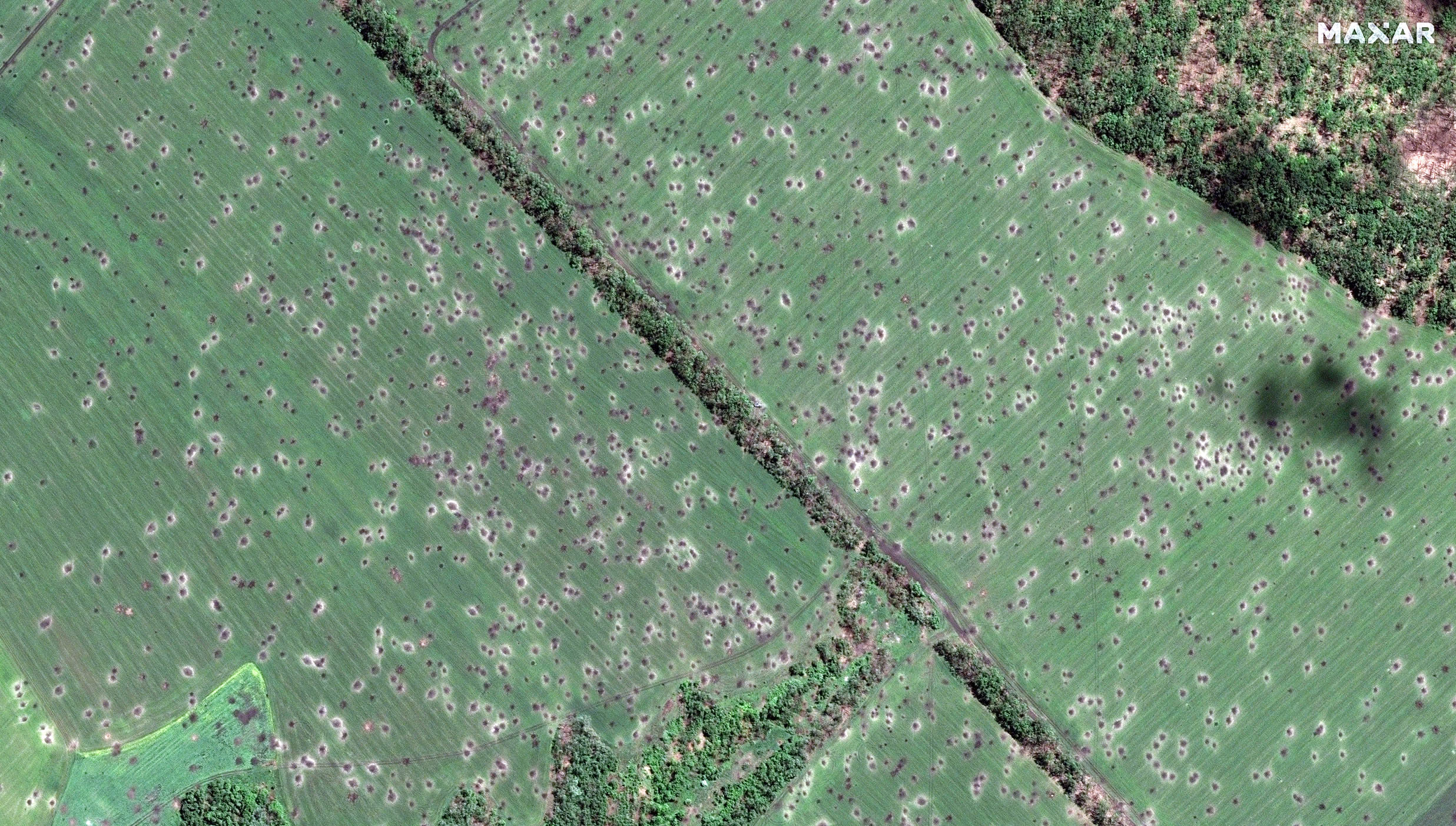
Together, these shells and projectiles upturned at least 90,000 tonnes of soil, adding tonnes of iron, copper, sulphur, and other substances that are frankly incompatible with growing wheat.
Medicine for the soil
Some technologies can help "heal" or at least improve the state of soil damaged by war or man-made disasters.
Plants’ dangerous ability to store heavy metals and other chemical compounds has a flip side. Plants like hemp, for example, can extract dangerous compounds from the soil and gradually make it cleaner and safer.
Gut microbiomes damaged by antibiotics can similarly be restored by drugs that contain friendly bacteria.
Even before the beginning of the full-scale war, researchers at Ukraine’s Institute of Microbiology and Virology have developed microbial formulations that can be used to "treat" soil, removing oil products, pesticides, and other dangerous substances and instead introducing helpful microorganisms.
Liudmyla Biliavska says that these treatments can be used in soils that have been damaged in hostilities. She and her colleagues continue researching this.
The Verdun battlefield
During World War I, the Zone Rouge (Red Zone) was formed on the site of the infamous Verdun battle in France.
Prolonged heavy battles in the area all but razed civilian settlements and infrastructure to the ground. The ground was scarred by craters, littered with ammunition fragments and unexploded shells, and contaminated with chlorine, arsenic, mercury, and lead.
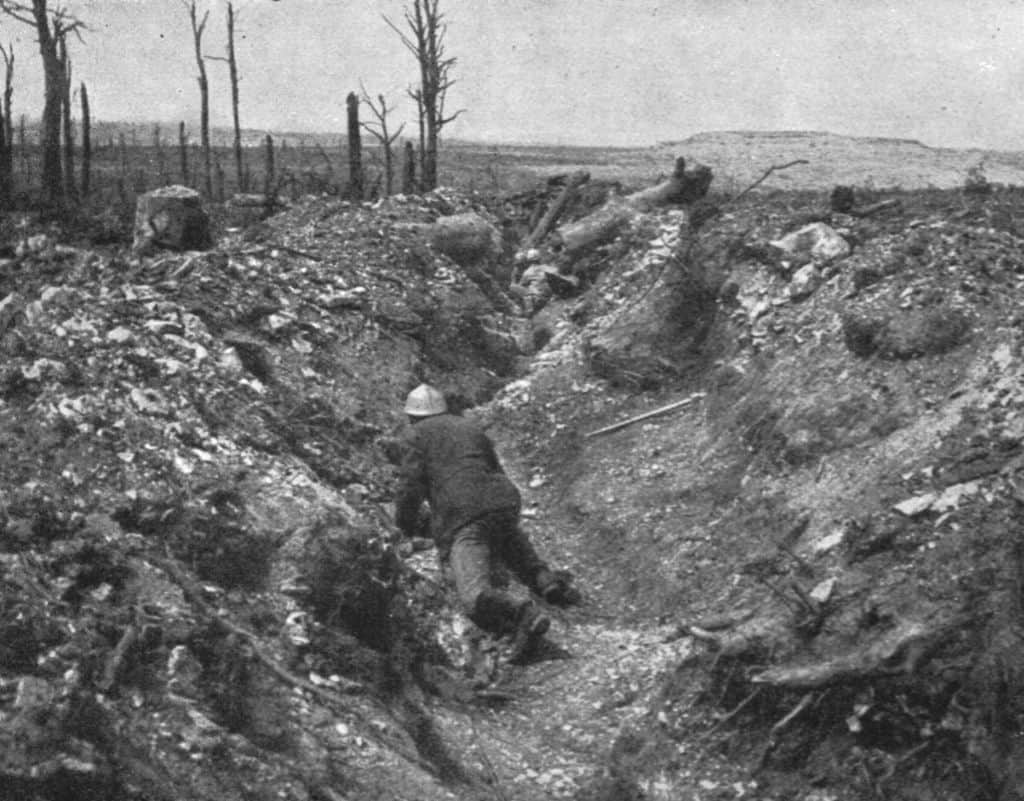
Over 1,000 kilometres squared ended up unsuitable for human habitation or agriculture, and the French government decided to designate the area as an exclusion zone of sorts.
Over the next 100 years, the Zone Rouge has shrunk by more than 10 times, and now covers just around 100 square kilometres. Mine clearance experts continue operating in the area, but local farmers still risk harvesting "iron crops".
Nature is gradually doing its job, too, with new habitats, or ecosystems, forming in century-old craters filled with water.
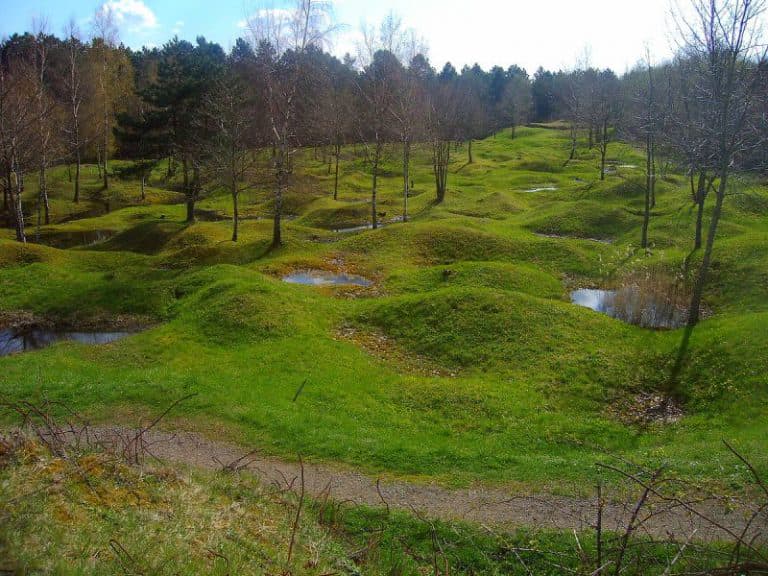
Still, areas that were used to safely detonate explosives remain barren: patches of tundra, where nothing but lichens grows because of soil pollution and erosion, in the middle of forests.
The reality is such that similar red zones might appear in Ukraine in areas where the war leaves a particularly noticeable mark on the soil.
Lessons from the Chornobyl exclusion zone
Ukraine’s experience with the Chornobyl exclusion zone can help it process this reality.
No one would ever think of describing the 1986 Chornobyl disaster, one of the largest man-made disasters in the history of humanity, as a good thing or a useful opportunity. Still, 30 years on, the Chornobyl exclusion zone has practically (and legally) become a large nature reserve.
Yes, the environment there suffered even before the construction of the nuclear power plant began – not least because many marshes in the area had been drained.
Most likely, the bears that have been spotted in the area in the past couple of years, will not return to live there – at least not in our lifetime. But the recent newcomers, tarpans – a kind of wild horses that had never before been seen there, seem to fit in well with the local environment.
A total of over 70 species of animals and nearly 50 plant species from Ukraine’s Red Book are being protected in the Chornobyl Radiation and Ecological Biosphere Reserve.
Carbon sequestration centres
Some might say that treating cities, villages, and fields purely as sources of biodiversity is a bit cynical. But the thing is, nature protection is an increasingly pragmatic affair. Nature protection isn’t just a gesture of good will, but a condition for human survival.

We can keep hiding from facts and pretending that humans have nothing to do with the temperature records our planet has experienced this year.
But the destruction of ecosystems like forests, marshes, and steppes is one of the causes of global climate change. Our job, then, is not just to protect the remaining ones, but to restore the eroded ones, wherever possible. Natural ecosystems are better at carbon sequestration than any technology we have come up with so far.
Red zones in southern and eastern Ukraine might become such carbon sequestration centres.
Of course we can try getting by without them. But then, in addition to making them safe for humans – which France couldn’t accomplish in over 100 years – we would also have to explain to the rest of the world and in particular to Europe, which Ukraine aspires to be part of, why Ukraine continues to have so much tilled land and why it remains so far from being a leader in environmental protection.
* * *
Botanists, zoologists, and their colleagues from similar disciplines have no doubts that it is critically important to preserve biodiversity. It is difficult, however, to "sell" this issue to people who have no interest in nature and environment protection – even though they depend on the environment and its biodiversity just as much as botanists and ecologists do.
It’s one thing to talk about protecting herring or other commercially caught fish. But it’s more difficult to convey the importance of protecting organisms that we can’t see and don’t really have a name for in Ukrainian.
Fortunately, when it comes to soil, Ukraine has a unique understanding of the importance of its biodiversity.
Japanese biochemist Satoshi Ōmura studied the importance of microorganisms that exist in soil back in the 1970s. He found that these organisms evolved to produce substances that suppress and kill their competitors; since those competitors sometimes happen to include organisms that humans also consider as pests, we might find those microorganisms useful.
Ōmura found a bacterium that can synthesise a substance that had been unknown until then in a soil sample collected by a golf course. The substance was named avermectin.
Avermectin’s derivatives were originally used to treat worms in pets, and later in humans. Today, they are used to treat various helminthic diseases, which Ukrainians, who live in the temperate climate, fortunately know almost nothing about.
Worldwide, however, avermectin-based treatments have been so important in combating parasitic diseases that Ōmura and William C. Campbell, an American scientist, were awarded the 2015 Nobel Prize in Physiology or Medicine.
Dmytro Simonov, Ukrainska Pravda
Translation: Artem Yakymyshyn and Olya Loza
Editing: Ivan Zhezhera